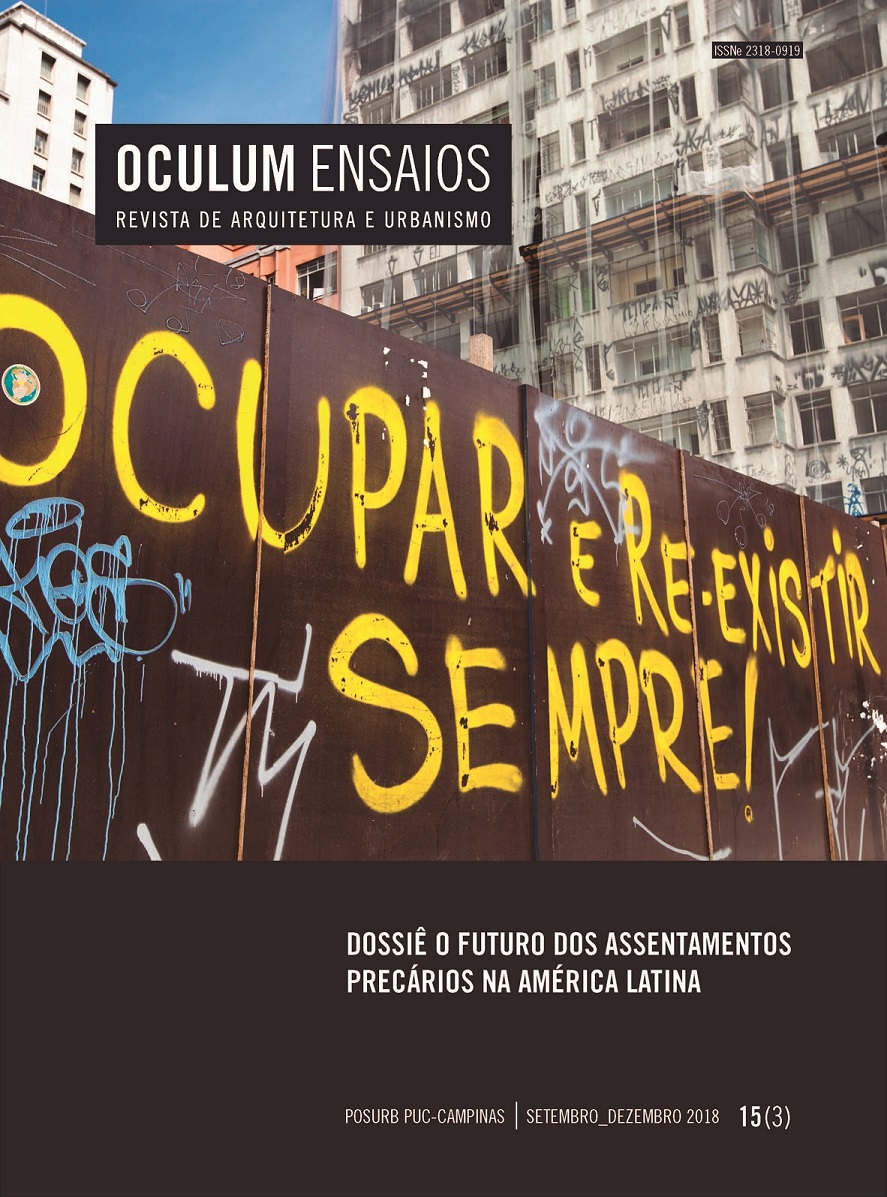The future of slums in Latin America
DOI:
https://doi.org/10.24220/2318-0919v15e2018a4401Abstract
Large cities in Latin America share characteristics such as the precarious conditions of their built environment and urban infrastructure, which result from the process of self‑construction of low‑income housing. In a comparison with the low‑income level of most of the local population, the provision of housing facilities by the State has always been deficient. On the other hand, the “spontaneous” solutions occurred in the form of inva‑sions or occupations of land lots, or through specific laws covering uni‑functional housing developments in areas located away from the consolidated urban mesh. Both solutions led to highly precarious settlements built by the dwellers themselves. Many of the pub‑lic actions oriented to the construction of low‑income developments in the region have been, and still are, the result of original settlements, in order to give way to roads or urban improvements that overrun the right of original communities to remain there.













